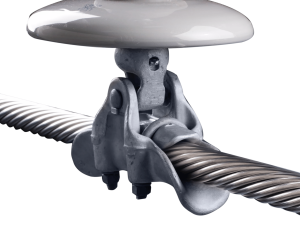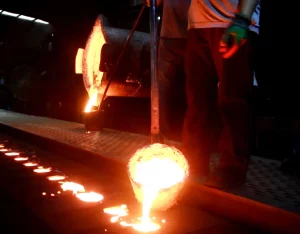Sand Casting: Sand casting is the most common type of iron casting process. It involves creating a mold using sand and then pouring molten iron into the mold.Grey iron castings and ductile iron castings are two different types of cast iron castings.
Gray iron castings are castings made of gray iron material, which have the characteristics of high processing accuracy, low material consumption, and low production cost. They are mainly used for manufacturing parts with complex shapes that are difficult to forge into blanks, such as corrugated pipes, brake drums, etc.
Ductile iron castings refer to ductile iron castings produced by casting methods, which have the advantages of light weight, high strength, good toughness, corrosion resistance, and low price. They are mainly used in fields such as automobiles, textile machinery, mining machinery, etc.
The process of creating customized iron casting parts involves several steps, including:
1. Pattern Making: A pattern is created using wood, plastic, or metal to create the desired shape of the part.
2. Molding: The pattern is used to create a mold, which is then filled with molten iron.
3. Pouring: The molten iron is poured into the mold and left to cool and solidify.
4. Shakeout: The mold is removed, and the part is cleaned and finished.
5. Machining: The part is then machined to achieve the desired shape and size.
Customized iron casting parts can be made from various materials, including:
1. Gray Iron: Gray iron is the most common material used in iron casting. It is a strong and durable material that is ideal for applications that require high strength and wear resistance.
2. Ductile Iron: Ductile iron is a type of iron that is more flexible and ductile than gray iron. It is ideal for applications that require high strength and ductility, such as automotive components.
The differences between ductile iron castings and gray iron castings are as follows:
The appearance of graphite is different. If the sound of striking ductile iron is similar to that of striking carbon steel, it indicates that the spheroidization of ductile iron is good, while the sound of striking gray iron is not loud.
The fracture grains are different. The grain size of the gray iron fracture is relatively coarse and gray white, with a metallic luster on the crystal surface; The fracture grain of ductile iron is very small, black gray, and if it is well spheroidized, it has almost no metallic luster.
Prices vary. Similarly, products made of ductile iron have different spheroidization rates and prices. Generally, factories consider a spheroidization rate of 85% as a qualified product.
In addition, there are differences in the appearance of graphite between gray iron and ductile iron.
Ductile iron is more durable than gray iron.
Ductile iron greatly surpasses gray iron in strength, plasticity, and toughness, and even approaches steel. In acidic media, ductile iron has poor corrosion resistance, but in other media, its corrosion resistance is better than gray iron. In addition, ductile iron has good corrosion resistance, which is twice that of gray iron castings.
The precautions to be taken during the production of ductile iron include:
Strictly require chemical composition, requiring a higher carbon and silicon content in the original molten iron compared to gray cast iron, and reducing the content of manganese, phosphorus, and sulfur in ductile iron.
The discharge temperature of nodular cast iron is higher than that of gray cast iron to compensate for the temperature loss of the molten iron during spheroidization and inoculation treatment.
Perform spheroidization treatment, which involves adding a spheroidizing agent to the molten iron.
Add inoculant for inoculation treatment.
Ductile iron has poor flowability and large shrinkage, so higher pouring temperature and larger pouring system size are required. Risers and cold iron should be reasonably used, and the principle of sequential solidification should be adopted.




-1.png)





-2.png)



-1-150x150.png)





-2-150x150.png)



-3.png)



